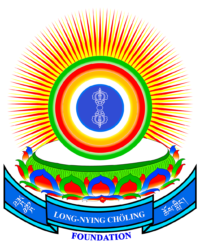
A Brief of Biography Ven. Yogi Lama Norbu Wangdi, the Fifth Abbot of Long-nying Chöling Monastery
Ven. Lama Norbu Wangdi, the 5th Abbot and Chairman of Long-nying Chöling Foundation, was born in 1944 in Longkhar, Khamdhang, Trashi Yantse, Eastern Bhutan, a hidden sacred land blessed by Guru Padmasambhava. His father, Ven. Lama Sonam Wangchuk, the 4th Abbot Lama of Long-nying Chöling Monastery, was a descendant of the great treasure revealer Guru Chöwang and the Nyö clan from Kurtö Dungkar, which also produced the Kings of Bhutan. His mother was Dre-nga.
A great Dzogchen master named Choying Rangdrol bestowed the name Norbu Wangdi upon him. Beginning at age seven, he received instruction from his father, learning to read and write, training in ritual practice and mudra, and engaging in the preliminary practices (Ngondro) of Longchen Nyingtik. He later enrolled in Chakyi Demig School, the earliest Western-style school in the Trashi Yangtse district, where he learned English and Hindi.
He subsequently trained under Lopon Kunzang Norbu at Baney Monastery for over a year, mastering the traditional arts of stupa architecture and preparation of inner relics and mantras for stupas and statues. From Lopon Kunzang Norbu, he also received Dzogchen teachings, including instructions on the nature of mind.
Lama Norbu Wangdi further expanded his knowledge by studying astrology under Astrologer Rinchen Khandro and receiving teachings and transmission of various prayers from Retreat Master Lama Trashi Tenzin of Kurtoe. He engaged in retreat practices of Dakini Singhamukha of Longchen Nyingtik cycles under the guidance of Lama Trashi Tenzin and Yerphe Lama.
From Lopon Jampal Lhundrup of Bayling, Trashiyangtse, he received teachings on Dakini’s laughter Chod, a practice passed down from the great Yogi Gya-nak Lama of Tibet. He also received teachings on the Queen of Great Bliss Dakini from Tokdenma Damchö Wangmo, a yogini from Bumthang, who visited Rigsum Gonpa and the charnel grounds of Yangtse.
Following this, Lama Norbu Wangdi studied under Lama Phuntsok Dorji, the 2nd Abbot Lama of Long-nying Chöling Monastery, receiving empowerments and teachings on the three roots of Longchen Nyingtik, Laughter of the Dakinis Chöd, and other treasures. He also received numerous empowerments and instructions from Dzogchen Pema Sengye Rinpoche, including the three roots of Longchen Nyingtik, Lama Chöpa practices, and Tara practice Luwang Gon-gyen.
In the 1960s, Lama Norbu Wangdi was among 100 students selected from across Bhutan to enroll in the first Rigzhung (Buddhist Science) Institute at Semtokha. There, under the guidance of Me-nyak Lama Gyalwang Nyima Rinpoche, he studied literature and grammatical texts, philosophical texts, and various Vajrayana teachings.
Upon completing his studies, Lama Norbu Wangdi was selected as a Gold Scribe to transcribe the Kagyur and Tengyur in Thimphu and Punakha Dzong, a project commissioned by His Majesty the 3rd King Jigme Dorji Wangchuk. He later worked on a gold scribing project of the 16-volume Prajnaparamita sutra for H.H. the 16th Karmapa. Over eight years, he dedicated himself to writing the Buddha’s words in golden letters. The wages he earned enabled him to receive teachings from various masters and travel to pilgrimage sites in Bhutan, India, and Nepal.
Throughout his life, Lama Norbu Wangdi received numerous empowerments, transmissions, and teachings from eminent masters, including H.H. Dudjom Jigdral Yeshe Dorje Rinpoche, H.H. Dilgo Khyentse Rinpoche, H.H. the 16th Karmapa, and H.H. the 14th Dalai Lama. He dedicated himself to extensive retreat practices and rituals, continuously striving for the preservation and propagation of Dharma.
Lama Norbu Wangdi significantly contributed to the renovation and expansion of Long-nying Chöling Monastery. He commissioned new mural paintings, statues, and other sacred objects, and organized various religious ceremonies and festivals. Known for his humility and dedication to Dharma, he tirelessly served the monastery and the community.
Lama Norbu Wangdi’s life exemplifies the conduct of a Bodhisattva, serving Buddha Dharma and sentient beings with unwavering humility and simplicity. His contributions to the spiritual and cultural heritage of Bhutan are profound and enduring.
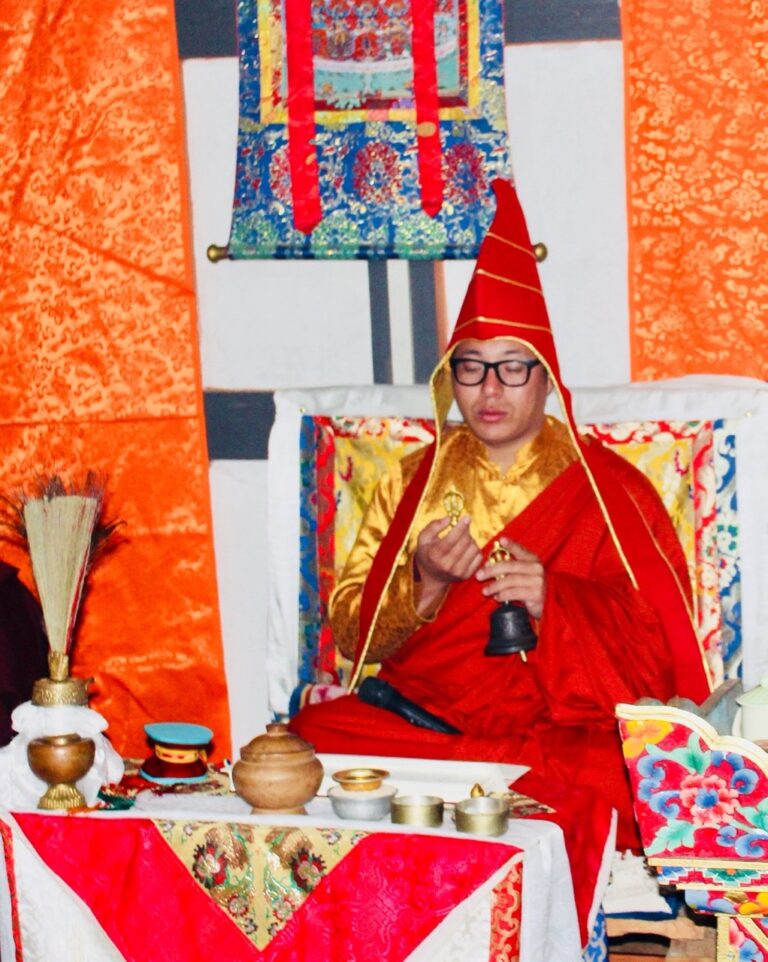
A Brief Biography Khenrinpoche Namchak Dorje, the Seventh Abbot of Long-nying Chöling Monastery
Khenpo Namchak Dorji is a Vajrayana Buddhist practitioner, scholar, translator and teacher of Tibetan Buddhism. Born into a family of tantric practitioners (Ngakpas) in Eastern Bhutan, nestled in the Himalayas, he belongs to the lineage overseeing Long-nying Chöling Monastery. From the age of four, Khenpo had the privilege of immersing himself in the teachings of Buddhism, encompassing reading, writing, and advanced Vajrayana rituals at his monastery. Guided by his grandfather, the abbot of the monastery, he received a comprehensive education. In addition to his monastic training, he pursued secular studies in both India and Bhutan.
With decades devoted to the study of Buddhism, he earned a Khenpo degree (Doctorate in Buddhist Philosophy) from the esteemed Nyingma Institute of Higher Buddhist Studies & Research Center in India. Khenpo has not only immersed himself in the rigorous practice of Vajrayana Buddhism but taught a range of Buddhist philosophies and sacred Vajrayana arts in Bhutan, Nepal, India, and the US.
Beyond his role as a teacher, Khenpo has been instrumental in researching, editing, and translating Vajrayana Buddhist texts in the West while simultaneously engaging in practice and teaching. In Bhutan, he oversees the Long-nying Choling Monastery and provides support to dharma centers in the United States, aiding serious Vajrayana Buddhist practitioners on their spiritual journey.
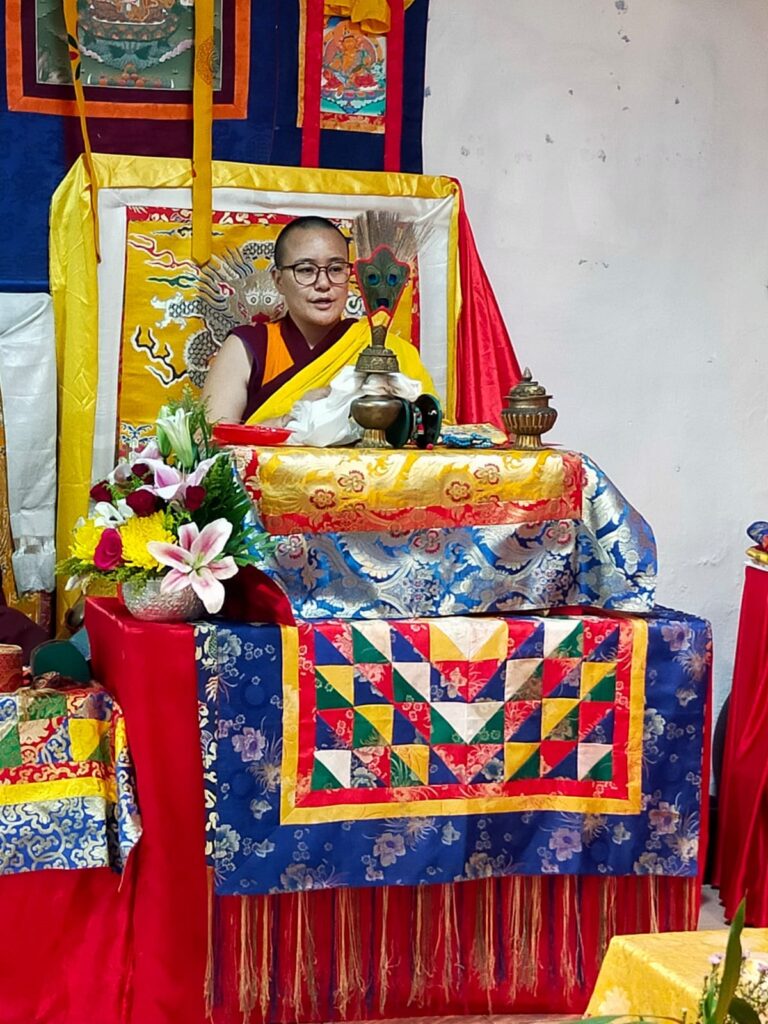
Ven. Master Damchö Wangmo
Ven. Damchö Wangmo is a learned and accomplished feamle master who was born in Tashi Yangtse, eastern Bhutan, to parents Tsering Norbu and Chokyi Zangmo. From the age of five, she was taught to read, write, and practice the Buddhist teachings by her parents. At the age of nine, she received teachings on the Ḍākinī’s Laughtor Chods and many rituals from Ven. Lama Norbu Wangdu, and the empowerments, transmissions, and instructions for Chöd from Tulku Sang-ngak Rinpoche. Between the ages of fourteen and sixteen, she received the transmissions and instructions on the Words of My Perfect Teacher and the preliminary practices of the Nyingtik from Ven. Drupon Lama Karma.
She later traveled to the Dharma city of Namling in South India, where she met H.H. Drupwang Pema Norbu Rinpoché. At Tsogyal Shedrup Dargye Ling Monastery, she studied, reflected, and meditated with about three dozen spiritual mentors, covering subjects such as the five great scriptural volumes, sutra and tantra, the sciences, history, and religious history. Under the guidance of H.H. Penor Rinpoché, she received the three sets of vows, the empowerments for the Treasury of Precious Hidden Teachings, and the Namchö Nyingtik, including the Root Lines and Completion Stage.
After completing her studies, she was appointed as a teacher, principal, and disciplinarian of study colleges in India, Nepal, and Bhutan, as well as at her own monastery. She faithfully carried out her duties during this period. She also undertook the approach and accomplishment phases of various practices, including those for accumulating merit, purifying obscurations, and the Heart Drop of Chetsün.
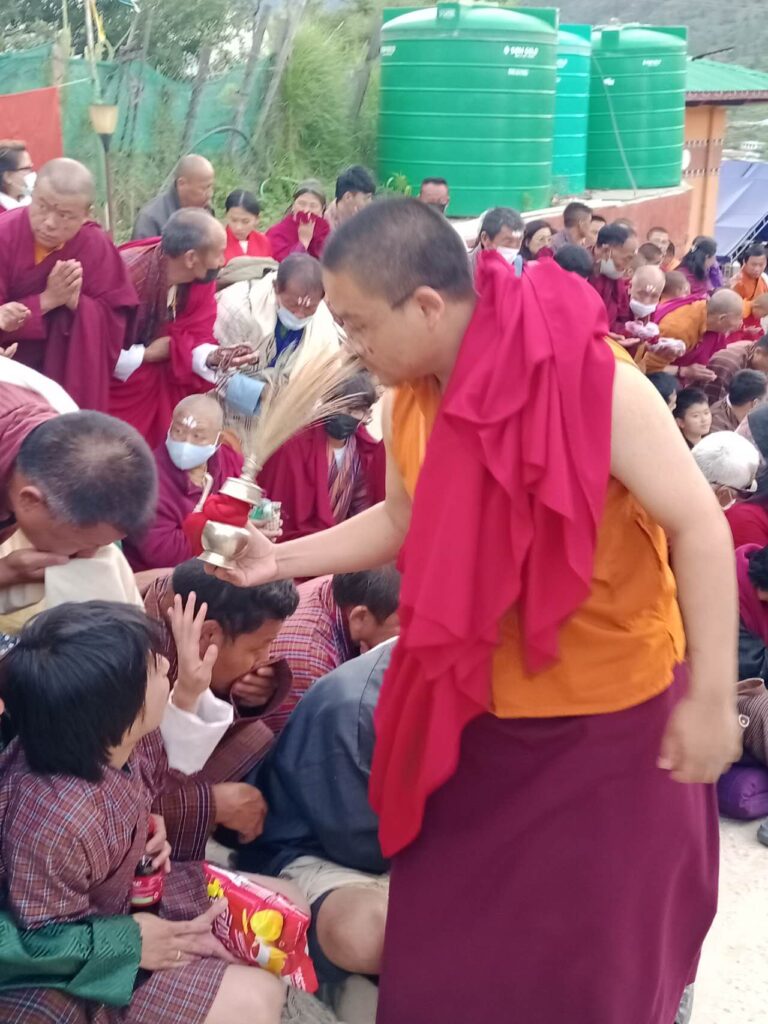
Tulku Dechen Dorji
Tulku Dechen Dorji is recognized as the reincarnation of Ven. Lama Dolma Wangdü, the 6th Abbot of Long-nying Chöling Monastery. At the tender age of three and a half, he astonished many by recognizing himself as his predecessor, recalling intricate details from his past life. Tulku Dechen Dorji is known for his disciplined nature and vast knowledge. He has excelled in academics throughout his life and holds a degree in biomedical science from Rangsit University, Bangkok, Thailand.
He has tirelessly participated in various extracurricular activities, including sports, literature programs, cultural events, traditional ceremonies (chadri), and dances.
Spiritual Education
From a young age, he learned to read and write Chökey (Buddhist literature) under the guidance of Ven. Lama Norbu Wangdi, the father of his predecessor. He fondly recalls learning near the fireplace in the cold mornings and evenings, with Lama kindly correcting his pronunciations. These memories of Lama’s kindness are deeply cherished by him.
As he grew proficient in reading, Lama Norbu Wangdi would take him to villages to assist in various rituals, such as averting diseases, sickness, disasters, and performing annual lochoe ceremonies to appease Dharmapalas, gather blessings, and pray for the deceased. He started his spiritual training as a Chöyog (assistant during rituals), learning to light a matchstick and sweep the floor under the guidance of Lama and fellow Dharma friends, often referred to as Gomchens.
Gradually, he learned to prepare various tormas (ritual cakes) and play instruments like dung (trumpet), jaling (similar to a hautboy), drum, and cymbals for offerings. He mastered various traditions of Jaling, including Tashi Tsekpa from Chant Master Sonam and Trongsarpai Jaling from Tashiyangtse Rabdey of the Central Monastic Body of Bhutan.
Tulku Dechen Dorji also studied various sadhanas of the Longchen Nyingthig and Konchogchidue traditions under Ven. Lama Norbu Wangdi. Additionally, he learned the Smoke Offering to appease Dharma Protectors, known as Sangpay Tashi Reykong of the Drukpa Kagyu tradition.
He received various empowerments and reading transmissions, including:
- Tara (Dolchog) of Kusum Gongdue tradition and Manjushri empowerments from Gochen Trulku Sangag Rinpoche.
- Sampa Lhuendrupma reading transmission and empowerment from Gochen Trulku Sangag Rinpoche during the enthronement of Terchen Pegyal Lingpa Yangsid in Siliguri.
- Tshoglay Rinchen Trengwa, Phowa, and Manjushri empowerment (Terma of Khenchen Jigme Phuntshok Rinpoche) from Tang Rinpoche Choeni Rangsar.
- Tshokyi Thuthig (The Essence Drop of the Lotus Born), Khandro Thukthig (The Essence of Dakini), Vajrakilaya Namchag Pudri (The Thunderbolt Razor), and other empowerments from Dzongsar Jamyang Khyentse Rinpoche.
- Jampel Mrawai Singey (Manjushri) empowerment and Gang Gi Lodroe reading transmission from Shechen Rabjam Rinpoche.
- Rinchen Terzoed empowerment from Shechen Rabjam Rinpoche.
- Oral transmission of Rinchen Terzod from Azom Gyalsey Rinpoche.
- Vajra Guru oral transmission from Trulku Sangag and Namnying Rinpoche.
- Reading transmission of Kuenzang Lamai Zhelung (Words of My Perfect Teacher) and Longchen Nyingthig Ngondro (Preliminary Practice) from Lama Norbu Wangdi.
He also completed a six-month retreat, focusing on the preliminary practice of the Longchen Nyingthig tradition.
Traditional Arts
From an early age, Tulku Dechen Dorji showed a deep interest in drawing, painting, and sculpture. He would spend hours observing others without the slightest distraction and practiced diligently during his free time. By the age of 13, he could paint various furniture and houses, including Choesham (Bhutanese altar made of wood).
He had the opportunity to learn Shingtsoen (traditional house and furniture painting) from Ata Namgay, a graduate of Choki Traditional Painting Institute in Bhutan’s capital. Later, he learned Lhadri (iconography and deity painting) from his aunt Tashi Lhamo, a student at Rigney Institute of Traditional Arts and Crafts. He advanced his skills under Lopen Jambay Dorji and completed a full course of Lhadri under Lopen Ngawang Tenzin, a direct student of the late Druk Thuksey Lopen Ugyen Lhuendup.
Alongside Lhadri, he learned Jimzo (sculpture of deities) from Lopen Ngawang Tenzin, who had been trained by Lopen Ugyen Lhundup under the guidance of Lopen Chedra of Kurtoe. Additionally, he studied the text and instructions on Lhadri by Menla Dondup, known as “The Wish-Fulfilling Jewel of Measurements for the Perfect Form of the Sugata.”
Tulku Dechen Dorji’s life is a blend of deep spiritual practice, rigorous academic achievement, and artistic talent, embodying the qualities of a true spiritual leader and artist.
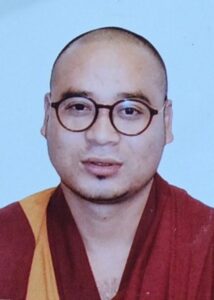
Khenpo Sangay Wangdi
Ven. Lopon Sangye Wangdu was born in 1991 in Eastern Bhutan. He began his education in 2000, attending Cheki Demig Primary School, where he studied for five years. In 2006, he entered Petsel Ling Jangchub Palri Monastery in Bumthang, where he spent three years mastering the ritual arts, including Torma sculpture, ritual instruments, sacred dances, and more.
In 2011, Ven. Lopon Sangye Wangdu pursued higher Buddhist studies at the Higher Buddhist Studies and Research Center in Sikkim, India. After nine years of rigorous study, he earned an M.A. in Buddhist Philosophy.
Since completing his education, he has dedicated his life to teaching, serving as a teacher at Long-nying Chöling Monastery for many years. Throughout his journey, he has received numerous empowerments, transmissions, and teachings from esteemed masters such as Rigzin Dorji Rinpoche, Tulku Sang-ngag Rinpoche, Padtsaling Tulku Rinpoche, and H.H. Rabjam Rinpoche. His commitment to both his own studies and the education of others continues to be a central focus of his life.
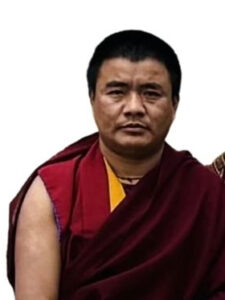
Lopon (Acharya) Neten Dorji
Ven. Lopon Neten Dorji was born in 1990 in Eastern Bhutan. He pursued his Buddhist studies at Rumtek Shedra for nine years, earning an M.A. in 2018. Throughout his studies, he received numerous empowerments, teachings, and transmissions from esteemed masters, including His Holiness the 17th Karmapa, Gyaltsab Rinpoche, Thrangu Rinpoche, Sangay Nyenpa Rinpoche, and Mirig Khenrinpoche, among others.
Since his graduation, Lopon Neten Dorji has been dedicated to teaching at Long-nying Chöling Monastery, where he has served for many years and continues to do so today. His deep commitment to Buddhist education and the transmission of knowledge has made him a respected teacher and practitioner.
